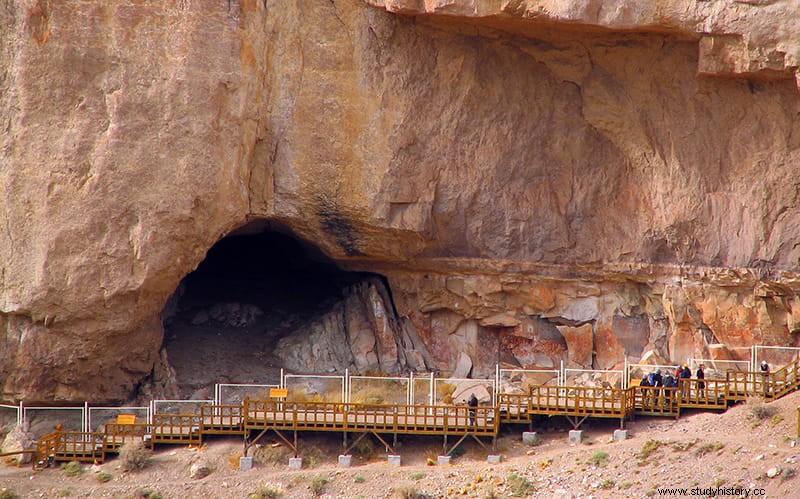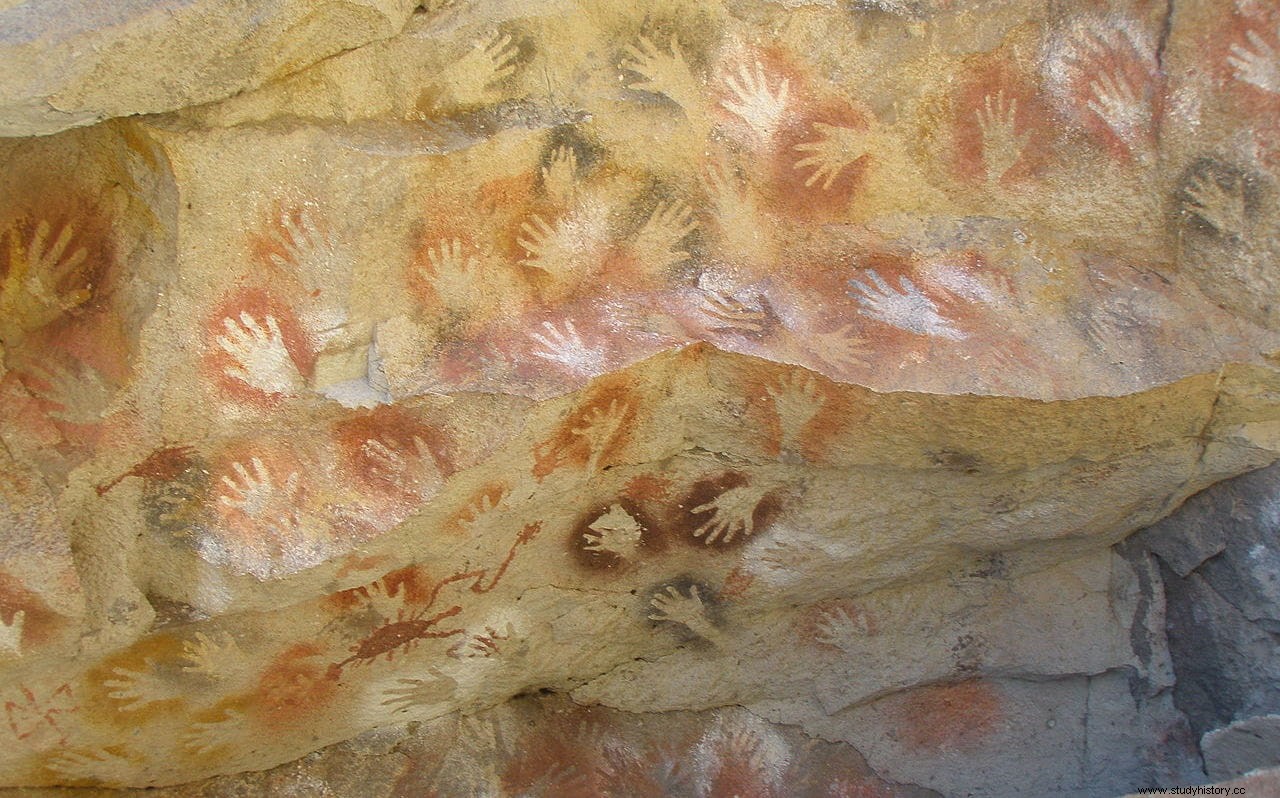Do you see those images of rock concerts with thousands of hands of the spectators on high? Those of football fans celebrating a goal would also be worth it. Well, they will not deny me a certain resemblance to the photo. Only this corresponds to hands that moved almost ten millennia ago.
It doesn't take much imagination to deduce the name given to the place:the Cueva de las Manos . It is in the province of Santa Cruz, Argentina, in an environment crossed by the Pinturas River, which also has a very appropriate name, and which forms an important archaeological complex along with Cueva Chica, Alero Charcamata and Cueva Grande.
Together they add up to about 800 representations of hands , mostly left.

It is a cave that, although it was already known since the 19th century (it was discovered by the explorer Francisco Pascasio Moreno in 1876, which has also given its name to the Perito Moreno glacier), excavations did not begin until well past the middle of the 20th century.
Its location almost seems topical, an entrance in the rock of a gigantic outcrop in the middle of the steppe, not far from the famous glacier, but the fact is that throughout the region -once close to the sea- numerous prehistoric remains have appeared, not only caves and paintings but also fossils.
The Cueva de las Manos measures 24 meters deep by about 15 wide and a dozen up to the vaults. Your occupation responds to three periods ranging from the year 7370 B.C. to 1000 of our era, approximately, a chronology that takes the American population back to a time earlier than previously thought, the so-called Pre-Clovis, which extends up to 13,000 years B.C.
The hunters and gatherers who inhabited that area of Patagonia, and whose descendants were the Tehuelches, painted these groupings of hands following the printing technique. , placing them on the stone and blowing paint on them through a tube - a bone, for example - to form a negative.

However, there are also images of local fauna (guanacos and choiques, the basis of their diet), as well as geometric signs (especially spirals, but also circles, ovals, stars...) and even anthropomorphic figures very simple. The more recent, the more abstract they present.
The colors they depended on the raw material used by the artist, which he obtained from his natural environment. Thus, the red came from pulverized hematite, the black from coal, the white from limestone, etc. Blood or animal fat used to be used as a binder.
The Cueva de las Manos is part of the World Heritage Site UNESCO since 1999, although its state of conservation worries the authorities. The excess of tourists is altering the interior humidity and temperature conditions necessary to ensure that the paintings do not deteriorate, not to mention the problem posed by current inscriptions or broken stalactites.
